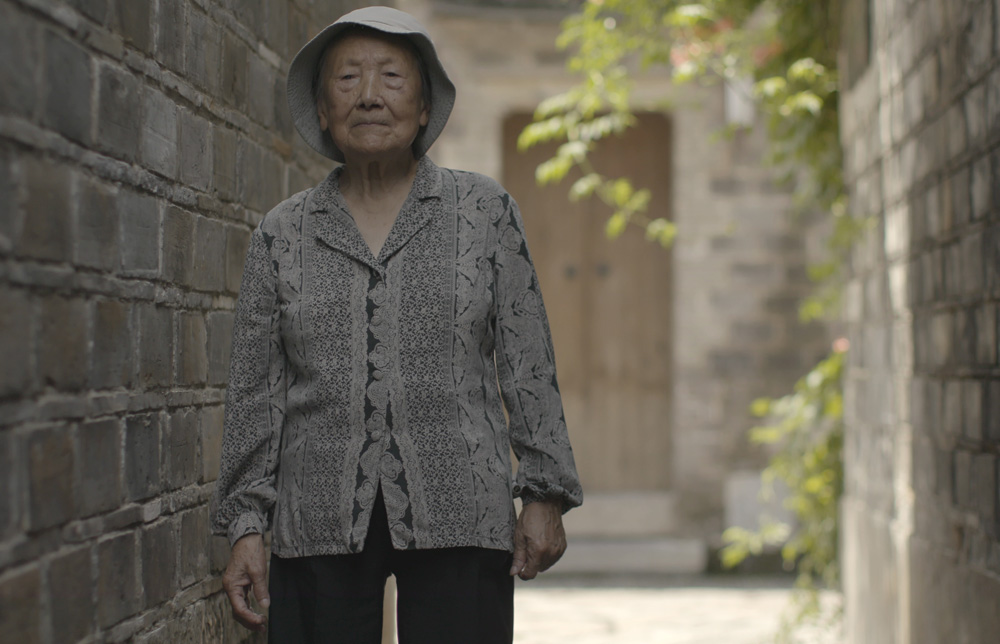If Vanessa Roth ever needed a reminder that what she was doing was important in making “The Girl and the Picture,” she could consider the archival footage she already had, the 16 millimeter film shot by the Priest John Magee while he was on an episcopal mission in China during the 1930s. Putting his life at risk during the Nanking Massacre to not only protect Chinese soldiers and civilians from Japanese invaders, Magee thought it might also not be a bad idea to pull out the camera that he’d use to film home movies with his family to have firsthand evidence of war crimes, footage that ultimately made its way to the U.S. government, the German Foreign Ministry and the media.
Eight decades later, the footage remains astonishing, but somehow Roth has found a way to make it even more so in relaying the story of Xia Shuqin, who was eight years old in 1937 when she’s caught by Magee’s lens, just after losing much of her family during the massacre in Nanjing. Working with the USC Shoah Foundation, the filmmaker travels to China to meet Madame Xia, now 88, as she shares her side of the story with her granddaughter Xia Yuan and her seven-year-old great-grandson Li Yuhan for the first time, as well as watching Magee’s grandson Chris travel to the region to retrace his footsteps. Capturing Xia’s powerful testimony is important in and of itself, but “The Girl and the Picture” is also vital in what it has to say about how history is passed down, a more delicate process than we’d like to think, particularly when Xia’s memory is questioned by those who seek to erase shameful past events from the record.
While Roth was in New York for the film’s premiere at the Tribeca Film Festival, she spoke about the privilege of sitting in on this important moment for Xia’s family and the responsibility of preserving it for generations to come, as well as coordinating a cross-cultural production and the benefits of a tight schedule.
The USC Shoah Foundation came to me and said we’d like to make a film about Madame Xia, one of the last living survivors of the Nanjing Massacre. There’s less than a hundred people left alive and the Shoah Foundation has been working with Madame Xia for some years to help make sure her testimony is well-documented and she’s been interviewed a lot in different formats by lots of journalists, But my interest in doing something about Madame Xia was taking the lens of this being a story of legacy and to go beyond just talking about that day [of the massacre], which is horrendous and you need to hear about, but also to understand her as a person.
The very first question I had when the USC Shoah Foundation came to me for this was, does Madame Xia have grandchildren? And not only does she have grandchildren, she has great-grandchildren. To me, that link to the seven-year-old boy was the most important – the youngest generation and the oldest in the family coming together.
It’s mentioned at one point that Madame Xia hasn’t told this story directly to her daughter and she’s passing it now onto her granddaughter – is this actually the first time she’s recounting this history for her family?
Yeah, her family has been by her side when she’s been interviewed by press, but this was the first time she really sat one-on-one with her granddaughter and her great-grandson to go through the photos [from the time of the massacre] together and it was the first time for [Xia and her granddaughter] to speak, visiting the places of the past and for the questions to be led by them rather than journalists.
You structure the film to some extent around a letter the granddaughter writes for her own descendants to read down the line. Was that something she actually intended to do prior to production?
She agreed to write the letter. [laughs] That was very deliberate of the storytelling technique because [I wanted this to be] about how we talk about storytelling and bearing witness and she was very happy to do it. But when we first met, I asked, “Is this something you would do?” because I didn’t want to say like, “You will now write this letter” – it is a documentary. And she said, “Well, I would do it, but usually I’d type it. It’s not something I would usually handwrite.” She and I crafted the letter together based on her time with Madame Xia and then we went back and figured out which pieces of the letter would go in the film, and then there’s a fuller letter that they have [for their personal use], and the [literal] handwriting part of it was something that we decided for the artistry for the film because it looks so beautiful. But that took some practice for her because her generation doesn’t handwrite, just like anywhere else in the world now, right? [laughs]
How did Chris Magee’s part of this story come into play?
From the very beginning, one of the things that we knew was unique and so important about Madame Xia’s story is that she is in John Magee’s footage. His story in and of itself is spectacular – how he risked his life to stay back in Nanjing to film the atrocities and his imagery is one of the only documents of what happened. He sent those to Life Magazine and he showed the footage at the war tribunals, so to have this relic, this photo of this woman [Madame Xia] who is now speaking, who happens to be one of the last living survivors, was of course going to be part of it. The foundation and I both really wanted to make sure that this was also a global story and to bring those two things together, so for Chris himself to be part of it, it’s back to this idea that we wanted of understanding ourselves by understanding our ancestors’ past.
Since the Magees’ story is so compelling, was it a challenge structurally to strike a balance between these two families, as well as how much of the film to spend in this remarkable archival footage versus the present?
It was so hard. [laughs] When we went to shoot, we knew we had John Magee’s film footage and that Chris was going to visit where the camera’s was held, so we knew the pieces we had, but then in editing, aside from language, that was the hardest thing for my editor Livio Sanchez and I to figure out – the pacing, the timing and how much of the film is the Madame Xia story and how much of the film is the John Magee story. And then we had to also introduce the Nanjing Massacre, which could have volumes and volumes and does – it’s the history of Japan and China. There’s so much that you could get stuck in a rabbit hole
and this is just a short film. It’s only 39 minutes.
Working on tight deadlines [as we were on this] is sometimes a good thing. You have to make choices and you have to make them quickly and this could’ve been a project that was overwhelming at times, but it really could’ve become harder almost if we had a lot more time because it is such a large story and now looking back, I’m thankful that we had structure around us trying to get this done.
When you’re coming in from another culture, what was it like working with a Chinese crew?
That’s the kind of challenge I love, but it’s absolutely a challenge because I want to be responsible and very sensitive to language differences and interpretation and respecting anything that I need to understand about cultural differences. We had both a very small crew from [the U.S.] and then we had a crew from China, and they actually already knew Madame Xia, so it was nice because she was already comfortable with them. I think she gave us access to her life and family because of them and the relationship she already had with the foundation and with the Memorial Hall in Nanjing.
The crew in China also helped [with] interpretation and translation. They were amazing and then when we came back [to the U.S.] to edit, we had some interns that worked with us who were in the documentary program at NYU who spoke Mandarin. The translation itself was an ongoing and multifaceted project because Madame Xia speaks with a little bit of a Nanjing dialect, so we made sure to have somebody who understood that too [because] there’s a very specific translation to what she’s saying, but the meaning may be a little bit different in English, so [it was] not just translation, but interpretation and we needed to make sure that interpretation was acceptable.
Did anything happen that changed your ideas about what this could be?
Right when we started, I was imagining we might have animation in it of Madame Xia as a child to try and understand and feel her story in a lyrical way because when she tells her story of what happened during the massacre, the imagery is obviously sparse. I didn’t want to do reenactments, and there is this amazing film footage that John Magee has of her in front of her house, also the bodies of her family. But I wanted the film to feel story-driven, and a lot of the film is them sitting and talking, and my surprise was I didn’t think we needed [animation]. It turned out that she’s such a strong presence and her granddaughter is so wonderful – their relationship is so nice – and her connection to her great-grandson is so beautiful that it actually would’ve taken away from that if I added this other thing that I thought we needed.
What’s it like getting to the finish line with this?
I’m really proud of it and it was a very collaborative, cross-cultural and cross-generational effort. I’m very honored that Tribeca’s taking it and showing it as its own special screening and I make films because I really think the potential impact and engaging with audiences. I love not just seeing a film at a festival and then walking away, but actually get to talk about it, so that’s what I’m hoping for with the film, and that’s what’s so nice about the USC Shoah Foundation is that their mission and goal is to make sure that the films and the work that they do is used for awareness and engagement and outreach. The hope is that it plays as widely as possible, so people to know about this moment in history and Madame Xia.
More information about “The Girl and the Picture” can be found here.





